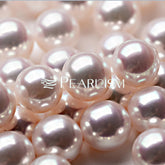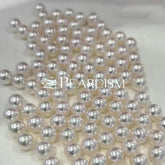Customer Service: Pearlismcs@outlook.com
Currency
Free shipping over $50.
Pearl Quality
Our Pearls are often esteemed for their unique qualities, which contribute to their value and allure:
1. **Luster**: One of the most important attributes of pearls is their luster, which refers to the shine or glow that emanates from the surface of the pearl. High-quality pearls have a deep, reflective luster that gives them a luminous appearance.
2. **Surface Quality**: The surface of a pearl should ideally be smooth and free from blemishes or imperfections. While some minor surface irregularities are common and can add character to a pearl, excessive flaws can diminish its value.
3. **Size**: Pearls come in various sizes, ranging from tiny seed pearls to large, baroque pearls. Generally, larger pearls are rarer and more valuable, especially if they maintain high quality in other aspects.
4. **Shape**: Pearls can be found in a wide array of shapes, including round, oval, baroque (irregular), and button-shaped. Round pearls are typically the most prized due to their symmetry, but perfectly symmetrical pearls are extremely rare.
5. **Color**: Pearls occur in a spectrum of colors, including white, cream, pink, silver, gold, black, and even more exotic hues like green and blue. The most valuable colors are those that are natural and evenly distributed throughout the pearl.
6. **Nacre Thickness**: Nacre is the organic substance secreted by oysters and mollusks that forms the layers of a pearl. Thicker nacre generally indicates a higher quality pearl, as it contributes to greater durability and longevity.
7. **Matching**: In the case of pearl strands or sets, uniformity in size, shape, color, and luster among the pearls is highly desirable. This consistency enhances the overall appearance and value of the piece.
These qualities collectively determine the overall beauty and value of our pearls, making them one of the most prized gemstones in the world.
- Choosing a selection results in a full page refresh.






